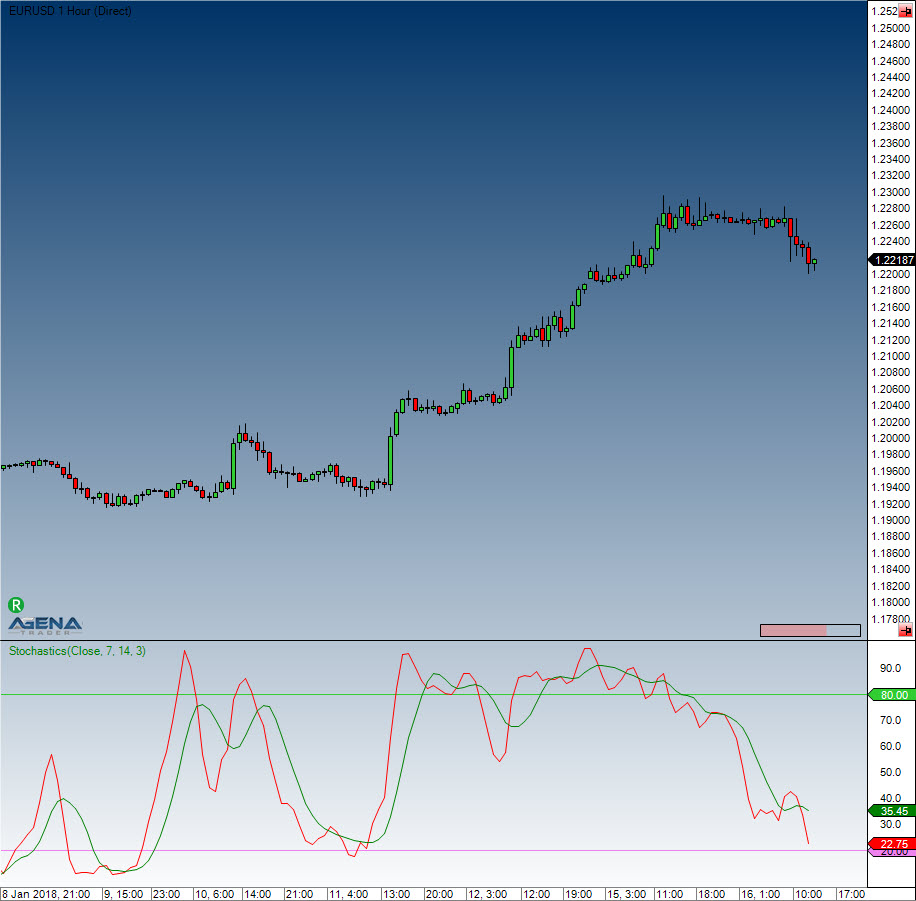Stochastics
Description
The stochastic indicator was developed by George C. Lane in the 1950s. It belongs to the class “momentum indicators” (oscillators) and represents the current closing price in relation to a high or low area over a defined number of periods. The stochastic indicator is based on the observation that in an uptrend, the closing price is close to the daily high, while in a downtrend, the closing price is closer to the daily low. The stochastic indicator consists of two exponential Average Lines (%K and %D), both of which range between 0 and 100. There are two types of stochastic: the classic slow stochastic and the fast stochastic.
Fast stochastic: The %D line is the smoothing average of the %K line
Slow stochastic: The %D is the basis on which the smoothing average is calculated. The slow stochastic smoothes the fast stochastic, thus stabilizing the oscillator.
Interpretation
The closing prices found in the upper area imply an accumulation (buying pressure); the lower area represents selling pressure. The stochastic indicator is a classic oscillator, and is primarily used in sideways markets in order to determine the reversal points. Days with a stable trend will not provide the indicator with any relevant or valuable results/information.
Further information
VTAD: http://vtadwiki.vtad.de/index.php/Stochastik
Usage
Stochastics(int periodD, int periodK, int smooth)
Stochastics(IDataSeries inSeries, int periodD, int periodK, int smooth)
//For the %D line
Stochastics(int periodD, int periodK, int smooth).D[int barsAgo]
Stochastics(IDataSeries inSeries, int periodD, int periodK, int smooth).D[int barsAgo]
//For the %K line
Stochastics(int periodD, int periodK, int smooth).K[int barsAgo]
Stochastics(IDataSeries inSeries, int periodD, int periodK, int smooth).K[int barsAgo]Return value
double
When using this method with an index (e.g. Stochastics(7,14,3)[int barsAgo] ), the value of the indicator will be issued for the referenced bar.
Parameters
inSeries Input data series for the indicator
periodD Number of periods to be used for the %K smoothing
periodK Number of bars included in the %K calculation
smooth Number of periods for the smoothing of %D
Visualization

Example
Last updated